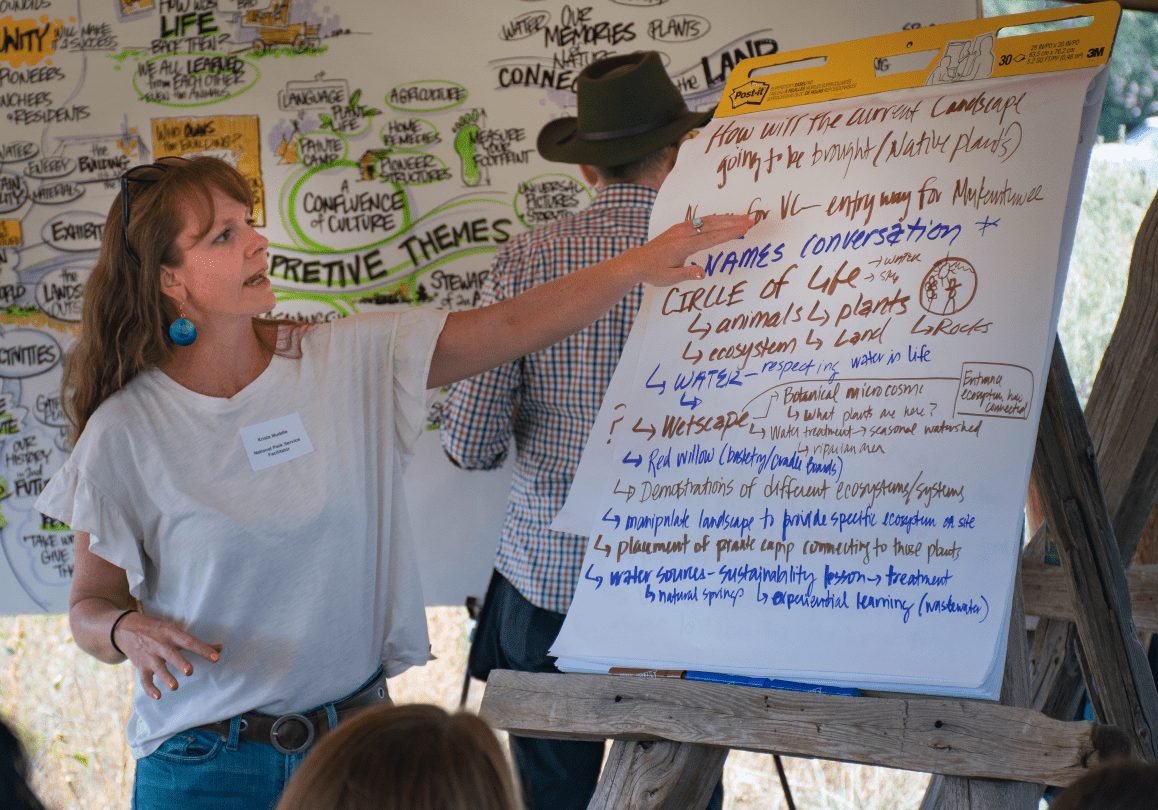From the Inside Out
$45,000 Needed
The completion of the park’s East Zion Visitor Center will create a new contact point between Zion’s interpretive staff and its visitors and allow the park to create new opportunities to educate visitors. The question now facing park interpreters is: “What is the future of education in East Zion?”
The National Park Service and its dedicated rangers offer some of the best classrooms in the nation, enlightening visitors on topics ranging from geology to history to ecology. National parks are an outdoor classroom for all ages, and a key ingredient of these classes is to highlight the messages the park and its partners feel are most important to get across to its visitors, as well as what will be most interesting and engaging to visitors.
Thanks to a generous donation from the Miller Family Foundation, and supporters like you, discussions on this East Zion Experience have already begun, bringing representatives from the Southern Paiute Tribe and academia as well as nearby landowners and political leaders to provide input on what they’d like to see happen, essentially creating what they like to call “The East Zion Experience.”
“The long-range interpretive planning process is critical to the success of the visitor center project,” said Zion National Park’s Interpretation and Visitor Services Manager Amanda Rowland. “This process provides the opportunity to gather stakeholders to share their compelling stories, brainstorm themes, and for the group to understand how important the land is to people. The actions that we take now are critical to recognizing the traditions of the land and how we will celebrate and connect to those traditions in the future. The next generation will have the opportunity to learn how to protect this place. It is exciting to be with such passionate people who want to connect the visitors to the land in such a unique and authentic way.”
The East Zion Experience planning effort will decide what rangers talk about in their programming with visitors and how the story of East Zion will be told through both indoor and outdoor displays. Coupled with sustainable building practices, East Zion interpretation will send a message about sustainability while also covering many other key topics, including: geology, ecology, tribal history, water, and others.
The new activities and programs introduced by the East Zion Experience will complement the already-established interpretive programming at the Zion Canyon Visitor Center, sending visitors the message of their shared stewardship with public lands such as national parks.
More than simple dioramas, they will feature innovation in the design and use of the visitor center. The goal is to make this site a must-visit precursor to entering the park, creating an “experience corridor” for visitors before even entering the park gates. The Zion Forever Project is already working with EDX, a leading firm that creates cutting-edge interpretive displays, to present East Zion’s story. EDX’s engaging exhibits create multi-sensory experiences that connect to audiences of all ages. EDX’s website touts creating “experiences that engage the intellect, stimulate the senses, spark dialogue, build relationships, and inspire action.”
“The interpretive signage we design through the collaboration with our stakeholders is very intentional,” Rowland said. “We truly have an opportunity to impact the visitor experience, how individuals connect to the resource, and build memories. What type of experience they have here locally on their visit will impact what they bring back with them to their community and even globally.”
Funding for this project will cement the story told to visitors at East Zion, finalize how it will be implemented, and pay for the engaging exhibits that will share the region‘s story.

